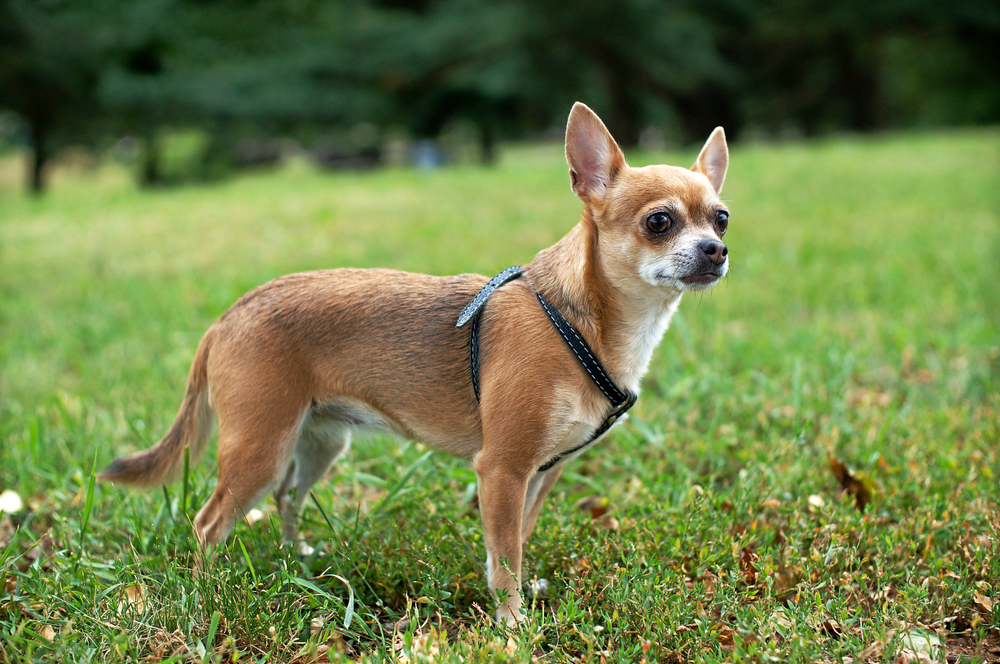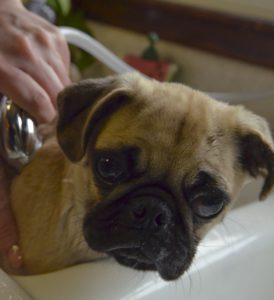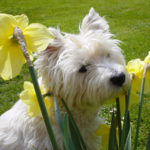
Caring for Small Dog Breeds
Understanding the needs of a small breed dog is important, as their care can vary from the larger varieties. Small breeds, such as Pomeranians, Chihuahuas, and Yorkshire terriers, typically weigh less than 22 pounds and stand at under 16 inches. Breeds in this category tend to live longer than larger breeds however they can be prone to one or two health issues like hip dysplasia and patella luxation. If you have limited space in your home, then a small dog may make the perfect companion for you.
As the owner of a small breed dog I have been aquatinted with some of the many benefits, not least of which is the age they can live healthy life, significantly longer than some of the larger breeds. My dog is nearly 13 and whilst she is certainly slow she is never the less going nowhere anytime soon. My dog is a West Highland White Terrier, she is large for a Westie but is never the less classified as a small breed Dog. Another benefit for us is she does not require any more than 20 mins of daily exercise. Less now she is elderly, which is useful as we have little time during the week.
Choosing the right dog for you
Small dogs, like all dogs, need regular exercise and despite evidence of some recent pictures I have seen of owners and their little dogs on social media are not fashion accessories, they are not designed to be carried around in handbags. Small dogs as mentioned previously don’t require as much exercise as large dogs, but some breeds can be quite energetic. The Jack Russell and the Cairn Terrier for example. Small dogs are undeniably cute, but dont let that sweet looking face fool you, they are still a dog and can still cause quite a nip if aggravated, so choosing the right breed for a family with small children is essential.
The Kennel Club have a useful list of breeds and personalities.
However, they do move at a slower pace than larger breeds and may not fit into your lifestyle if you enjoy long hikes in the countryside. If you have young children, then you will need to consider which breeds would be best suited to family life. The biggest advantage of owning a smaller dog is that they obviously cost less to feed and don’t require as much living space.
I have written a blog post about exercising with dogs which you may find useful. Click here to read
Training and socialisation

Despite their size, some small dog breeds can have big personalities and soon learn how to take advantage of their owners. It is often thought that small dogs are less obedient, more excitable and aggressive, and more prone to anxiety than larger breeds. However, much of this is thought to be down to the owner’s behaviour towards their dogs. Spending more time with your dog and being consistent in its training and socialisation can help to significantly improve any behavioural problems.
Many dogs suffer with anxiety and if left alone for long periods will become destructive and behavioural problems can occur. I will be writing a blog post surrounding Separation Anxiety disorder but suffice to say in the first month or so you will need to devote a large amount of time to working with the family dynamics of having a new member of the family.
If your new small breed is an adult dog and from a rescue shelter then please read my post called Adopting A Rescue Dog First 7 Days. Whilst not specifically small breed orientated it will never the less apply to this post
Diet is important
Small dogs require less food than large breeds but not necessarily less calories. It is therefore best to feed breeds of this size twice a day rather than just once – about half a cup of food per meal is about right. There are plenty of food choices available for dogs in this category, such as kibble, that come in easily digestible, bite-sized pieces. I have written some blog posts about the best Kibble, Wet and raw food, although the latter is far less popular with the small breeds.
I have also product reviewed Dry and Wet foods for your dogs, see below and click on the links
Click here to read review of “Healthiest Dry Food for Dogs”
Click here to read review of Healthiest Wet Food for Dogs
Grooming

It is often thought that small dog breeds require less grooming than larger breeds, but many of the smaller breeds have thick coats that require a lot of upkeep. It is always best to begin grooming your pet from an early age so that it gets used to the regime as soon as possible.
Your dog will enjoy being groomed more if it is well trained and used to sitting quietly during the grooming process – an excitable dog could also get injured if it jumps around while you have a pair of sharp scissors in your hand. You may also need to consider the size of the grooming tools you use on a small breed, as it could be quite tricky trying to trim tiny claws with a large pair of clippers. Personally I have my Westie professionally groomed every 8 weeks. It is a lot less hassle and I am not great at nail clipping.
Do not feel you have failed your dog if not up to the task of clipping nails or coat. I often find Dolly will sit quietly when the Dog Groomer is in attendance where as when in my company she is all over the place and neither of us feel confident
Dog Groomers are usually advertised, however in my opinion a recommendation from a friend, family member or neighbour is usually a better bet. These days many groomers also offer a mobile service.
Whilst few dogs like being bathed it is never the less a wise option to get them used to being groomed.
One of the unexpected grooming duties, which I had not envisaged (many many years ago when we acquired our first dog (puppy) was cleaning of the teeth. I had assumed this was somehow done when they chew and eat their food. Surprisingly that is almost accurate. Many years ago when dogs foraged and scavenged, teeth were indeed cleaned by chewing and gnawing of bones and solid substances. These days however they may well simply eat soft food and never use their huge canine teeth for their intended purpose. Thus you will need to clean the teeth manually. Or you can purchase the Denture Sticks, found in any supermarket or on Amazon
Examples of low-maintenance breeds include shorthaired Chihuahuas, French bulldogs, Italian greyhounds, and miniature Pinschers.

Examples of high-maintenance breeds include miniature poodles, Skye terriers, Maltese terriers, and Yorkshire terriers.

Buying the right accessories
You will need to consider a number of issues when buying accessories for small dog breeds, such as safety, comfort, and practicality.
Collars, leashes and harnesses
When buying a collar and leash for a small dog, you should consider the weight, durability, and comfort of the items before making any purchases. Retractable leashes can be a good option, as they give your dog more freedom without you having to let it off the leash. A harness can often be a better choice than a collar, as it gives the dog much more support across the chest and doesn’t pull on the delicate neck area.
Food and water bowls
When choosing bowls, it is important to think about the height of your dog, the length of its ears, and whether it has a long or short nose. Shallow bowls are generally better for small dogs, as they allow the animal to comfortably reach all the way into the bowl without putting any pressure on the throat. Slightly deeper bowls may be better for dogs with longer noses, such as Dachshunds.
Dog beds
It is always best to consider your dog’s metabolism and thickness of coat before deciding on the perfect dog bed. You could always take your dog along with you to try out some of the dog beds to find out which ones it prefers. Generally, many small dog breeds prefer cosy beds that they can sink into and feel secure.
Conclusion
Small dogs can make great pets for people of all ages. Their small size also makes them easy to transport from one place to another. However, owning a dog, regardless of its size, is a big commitment and requires plenty of time, patience, and understanding.
Thank you for reading until the end of my blog.
Please comment below, other dog owners like to read about others experiences.
Looking forward to catching up with you soon
Cordelia & Dolly

NB I will be adding links to the blog post at a later stage which will include product reviews for Leashes and Leads.
I have reviewed the luxury crates for puppies and small dogs please click here if you would like to view
Terrific guidance on choosing the right dog for you and your family, and also for feeding, and exercise and general living arrangements. As a small dog owner and fan, I love this blog!
Hello John,
Thank you for your comments, as a fellow Westie lover and liker of my blog you are well on the way to being my new best friend. ?